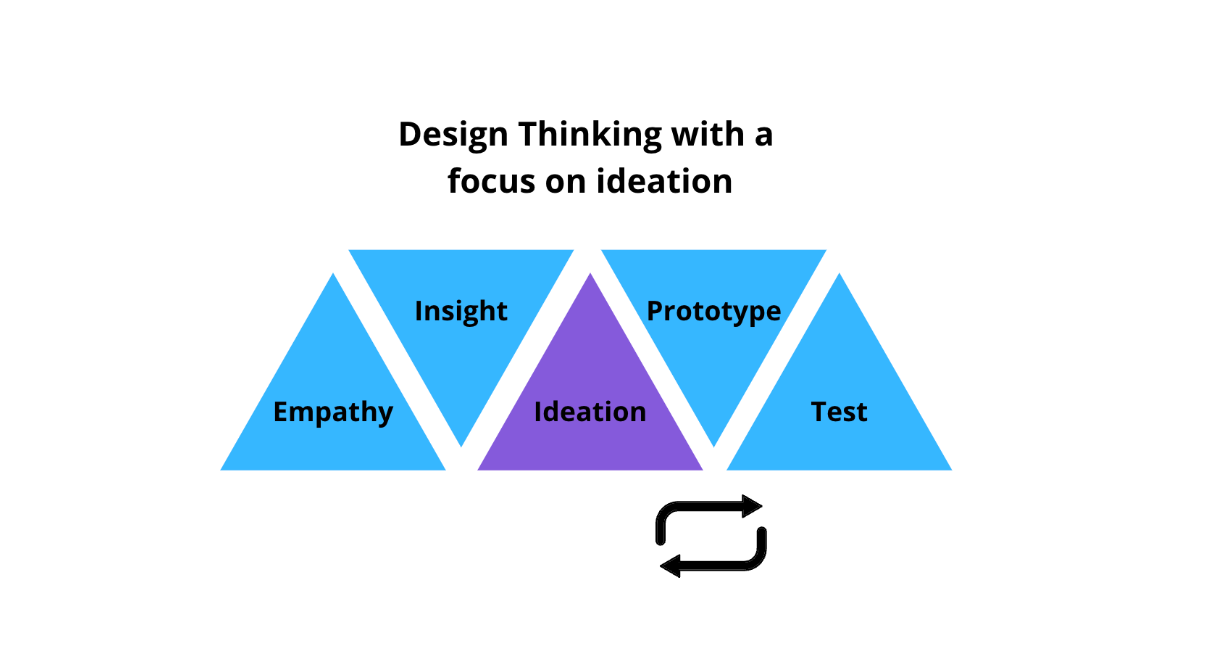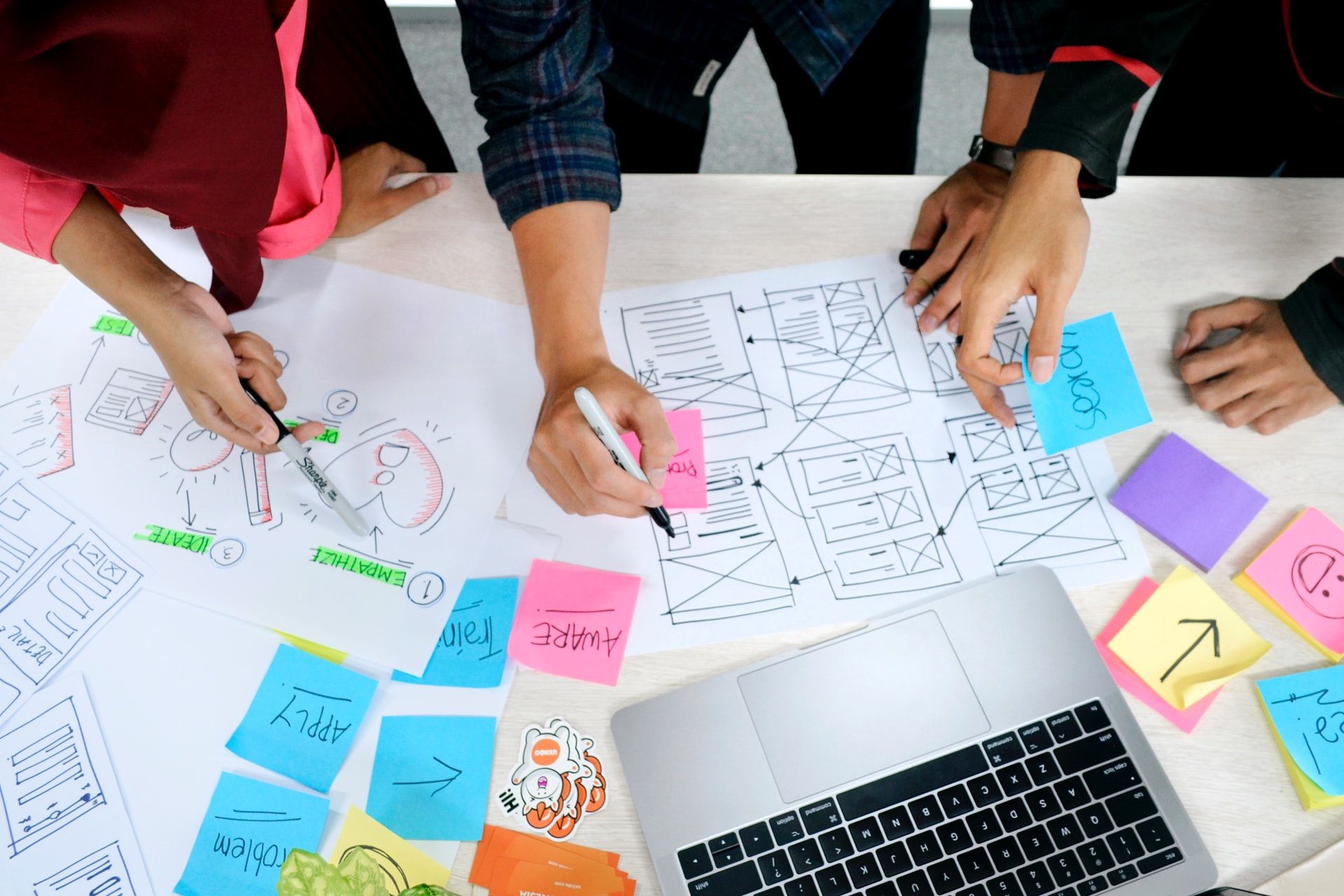Sometimes a new way of organizing work leads to extraordinary improvements. If you’re an entrepreneur, designer or any kind of employee really, you are no stranger to the constant pressure to innovate. It is after all the key to progress and success. Our ability to conceive ideas which are at once actionable and effective is what gives us the upper hand in competitive industries.
The world's biggest brands were all born out of innovation. Now, the challenge that all of these companies—and your company too, no doubt—face is to continue that innovation in order to maintain or further advance their position in their respective fields.
What is design thinking
Design thinking originally came about as a way of teaching engineers how to approach problems creatively, like designers do. One of the first people to write about it was John E. Arnold, professor of mechanical engineering at Stanford University. He wrote the book “Creative Engineering”, the text that established the four areas of design thinking. From there, design thinking began to evolve as a “way of thinking” in the fields of science and design engineering. By the start of the 21st century, design thinking started making its way into the world of business. Later, Stanford University’s d.school began teaching design thinking as an approach to technical and social innovation.
Great design is simple, beautiful, and easy to use. It responds to user needs, and creates a sense of purpose and place. Design thinking is an approach to innovation that's based on empathy for the user. With a focus on customer needs, you come up with ideas, iterate, and then implement the best ones. While Design Thinking applies to many undertakings and many types of problems, in product development, it is a means to direct and focus innovation that drives growth in sales and profits. It focuses on achieving practical results and solutions that are:
- Technically feasible: They can be developed into functional products or processes;
- Economically viable: The business can afford to implement them.
- Desirable for the user: They meet a real human need.
It is an iterative process that allows teams to question their assumptions and focus on the user experience above all else.

Design thinking allows teams to broaden their horizons through deep insights into the problems customers face. Later in the process, it allows teams to pivot and laser focus on the best solutions. By testing prototypes with customers, and incorporating their feedback into subsequent iterations, teams filter out the best ideas.
Although in theory it follows a process and is approached in a sequential way, as shown above, it often takes the form of a non-linear problem solving process. There are several models of Design Thinking available from organizations such as the Stanford d.school, IBM, Google, IDEO, and others.
Design thinking has long been considered the holy grail of innovation—and the remedy to stagnation. One of the most remarkable feats it has been attributed is transforming Airbnb from a failing startup to a billion-dollar business.
How to leverage Design Thinking to scale your business
There are many ways to implement Design Thinking to your business no matter the industry. It is usually applied, but not limited to, product development. In the context of product development, it usually features some version of the following steps:
- Empathizing with users: Design thinking is all about finding solutions that respond to human needs and user feedback. This includes customers, potential customers, lost customers, economic buyers, and influencers.
- Studying and Understanding insights and user experiences: An essential part of the process involves stepping into the user’s shoes and building genuine empathy for your target audience. It’s important to grasp their problems and cast them as insights.
- Ideating proposed solutions: Challenging preconceived notions and developing a range of innovative solutions. Design thinking is a solution-based framework, so the focus is on coming up with as many ideas and potential solutions as possible.
- Prototyping and testing to gain more feedback: Begin to realize a solution. It’s not just about coming up with ideas; it’s about turning them into prototypes, testing them and making changes based on user feedback.
- Iterating and reflecting: Define concepts, prototype, and test iteratively; reflect and validate until you have produced the very best solution. Design thinking is an iterative approach, so you have to be prepared to repeat certain steps in the process as you discover flaws and shortcomings in the early versions of your proposed solution.
It isn’t necessary to apply all the steps in the design thinking process at once, you can always start small. For instance you can start by focusing on getting to know your customers/users and making a conscious effort to be more empathetic towards their needs. This will kick start things and already make a difference in your process of work.
Benefits or value of applying this process
Product and service design are the most obvious contexts to benefit from design thinking. However, the design thinking framework can be used to tackle all kinds of challenges beyond just design. It’s important to recognize that the main ideas at the root of design thinking (ideation, empathy, continuous research, etc.) are not foreign to other fields.
Like with healthcare, you can view the entire business system, not just products and services, through the lens of design thinking. What better way to be involved with the people you're helping than to talk to them and learn about what they truly need?
Design thinking is rapidly being integrated into businesses as a way to foster innovation and teamwork. All businesses have a list of goals, ranging from constantly releasing new products that increase sales to providing better customer support. When a business decides on a new product, usually the costs are heavy. Applying design thinking can help cut back on costs right away because it directs attention to the specific solutions people actually need.
In their article, “Why Software Fails,” IEEE estimates that the amount spent on IT projects worldwide is approximately $1 trillion a year. According to their report, of the top twelve reasons why projects fail, three are related to user-centered design failure:
- Badly defined requirements
- Poor communications among customers and developers
- Stakeholder politics
That’s why it’s important to incorporate empathy for your users to your process. If your company invests in design thinking you will start to see benefits such as:
- Reduction in engineering hours and thus a decrease in costs
- Decrease in cost of customer support
- Increase in conversion rates
- Improvement in customer retention and loyalty
While every business is different, the first step to understanding how design thinking can help a business is to consider the challenges it’s currently facing. What are these challenges and are there solutions already available that match the business’s needs and budget? If not, why? What are the things prohibiting those solutions, and where do those blockers stem from? Design thinking breaks down complex issues into tangible ones that can be analyzed and solved.
A successful case study of how design thinking can be applied to growth is the example of Insurance firm MassMutual using a design thinking approach to tackle the challenge of getting young adults to purchase life insurance. In partnership with IDEO, they did extensive user research over the course of a few years. Based on what they learned, they then started prototyping and testing. The end result was Society of Grownups, a suite of digital tools that help to educate young people to make smart financial choices.
From what we have seen, the process of design thinking creates a natural flow from research to the rollout of the product/service. Studying and empathizing with customers’ experience produces data, which is analyzed and transformed into insights, which help teams agree on design criteria they use to brainstorm solutions. Those solutions are examined and then tested with rough prototypes that help teams further develop innovations and prepare them for real-world experiments. After testing the prototype it’s important to iterate based on the feedback obtained from user testing.
This process isn’t just pertinent to product development, it can be applied to various industries and projects alike. By involving customers and other stakeholders in the definition of the problem and the development of solutions, design thinking garners a broad commitment to change.




